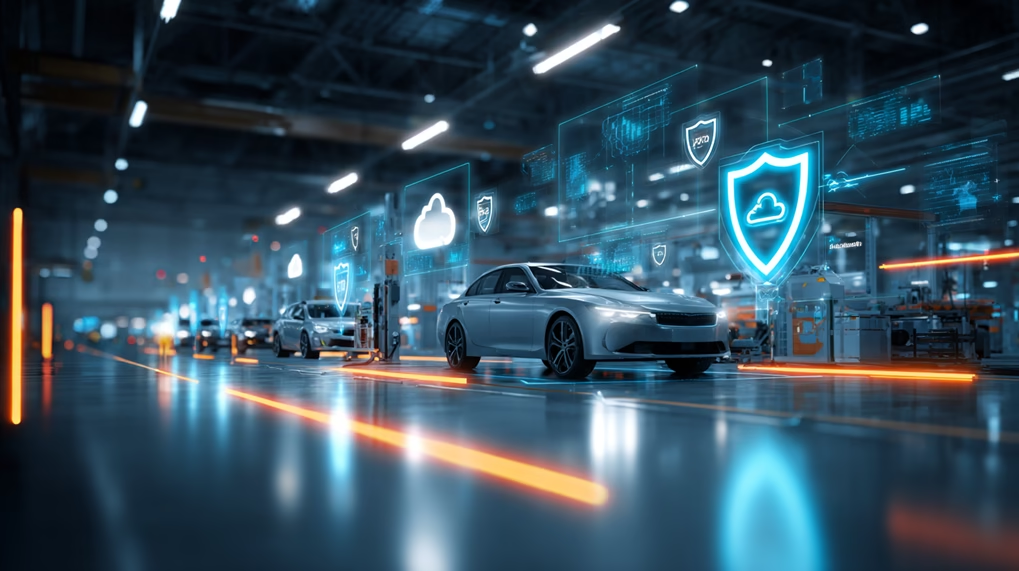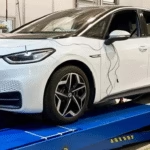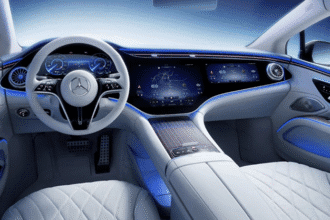The concept of software defined vehicles (SDV) is a fundamental change in the engineering of vehicles, in which software happens to dominate the vehicle functionality as opposed to hardware. These vehicles are based on centralized computing platforms to control even the best driver assistant systems as well as the infotainment and powertrain systems. Over the Air testing (OTA) updates allow manufacturers to easily deliver software improvements, bug fixes and security patches wirelessly, without the need to visit the service physical store. This is needed to ensure that vehicle performance is maintained during its life cycle which may take 10 to 20 years.
This can already be seen with Tesla and Rivian, ones which still update to enhance performance of vehicles even after they have been delivered. The shift to the SDVs has been fastened by the increasing consumer need of connectedness as well as by the growing regulatory requirement of enhanced security and cybersecurity. The global automotive OTA updates market, according to market analysis, will reach USD 5.03 billion in the year 2025 with an increase in USD 4.29 billion in the year 2024 with a compound annual growth of 17.2 percent. The increasing usage of connected cars is driving this growth and as of 2023, more than 309 models operating under 23 brands include the OTA features.
The OTA updates have become a norm with major manufacturers like Tesla, BMW and Hyundai providing updates on their performance, battery control and even entertainment capabilities via remote updates. The fact that Over the Air testing updates not only improve the user experience but also lower the costs of recall is due to the fact that, this type of update allows to proactively address the issue. An example of remote recalls via OTA technology is Tesla, which has conducted recalls remotely, such as a February 2024 recall of millions of cars to fix brake light warnings, which would have cost millions of dollars in service fees. Equally, Volvo introduced a 2024 update, which enhanced the functionality of Apple CarPlay in over 650,000 vehicles and the deployment was done in a safe and remote manner.
But with increased software reliance on vehicles, testing is becoming increasingly complicated. It is necessary to ensure that many ECUs are compatible and cybersecurity risks are reduced. Strict testing is essential to prevent failure that can endanger its safety or lead to mass disruptions like when Ford halted OTA updates to its Mach-E models after finding problems with its integration.
Table of Contents
OTA Update Testing Problems in SDVs
There are both technical and logistical challenges in Over the Air testing updates in software defined vehicles. This broad range of vehicle models makes compatibility challenging as the manufactures usually contract with several ECU vendors on different software platforms. As the example of the ID.4 electric SUV by Volkswagen, the vehicle incorporates dozens of ECUs of various suppliers, so it is challenging to coordinate the software versions across all the systems.
Network reliability and bandwidth is also an issue. Big firmware updates will fail in weakly networked areas. To address this, various companies such as NIO and Polestar employ different Over the Air testing updates, which only transmit the parts of the software that have been modified to achieve a reduced data transfer size by up to 90 percent.
Another significant issue is cybersecurity, which can be a problem with OTA channels since they may be intercepted or tampered with. A denial-of-service attacks and unauthorized access have been identified as some of the threats highlighted by the National Highway Traffic Safety Administration (NHTSA). The remote hacking of a Jeep Cherokee in 2015 came as a grand alarm and led to a significant change in encryption and support of certificate-based authentication as well as the use of secure boot mechanisms by car manufacturers.
Moreover, the manufacturing industry has to meet stringent regulatory standards, such as the ISO/SAE 21434 on cybersecurity and the UNECE WP.29 on how to deal with a software update. Wards Intelligence (2025) survey found out that the majority of engineers are aware that OTA updates are important and yet they continue to have difficulties in implementing them into older systems and incurring related expenses. Testing should also be made to consider the edge conditions, which include low battery, extreme weather and simultaneous updates which will result in unpredictable system behavior unless well tested.
Best Practices for Secure Over the Air Testing
In order to have safety and reliability, automakers should adopt clear-cut Over the Air testing procedures. Implementation of a zero-trust architecture is important. All communication connections between cloud servers, gateways and ECUs are supposed to be mutually authenticated and encrypted. By using distributed agents such as the eSync in the Platforms like Excelfore, it is ensured that applications like eSync will verify the integrity of the payload at a bit level before being installed into the computer system so that there will not be any form of tampering during the transit.
Simulations with Hardware-in-the-Loop (HIL) environments are pre-deployment simulations that enable the engineer to find out the real driving environment, identify any possible problem before-hand and come up with rollback procedures in case of installation failures. The HIL setups are heavily used at firms such as BMW and Bosch to test updates on ADAS before they are deployed to large fleet.

The combination of Continuous Integration and Continuous Deployment (CI/CD) pipelines automatize the process of building, testing and deploying and minimizes human error, which is one of its benefits, as well speeding up the rollout time. The partnership with Mender demonstrated that even the massive updates of OTAs can be effectively handled by ZF Friedrichshafen through automated pipelines provided that the number of ECUs taken up is large. Designing that is user oriented is also important.
Trust and increase satisfaction is built by providing drivers with update notifications, detailed releases notes and the ability to postpone implementations. AWS and Microsoft Azure are now the foundations of OTA infrastructure in car manufacturers and other automakers like Ford and Hyundai, with secure and large-scale deployments, which can support millions of cars at once.
Over the Air Testing Methodologies
Over the Air testing is a mix of cybersecurity and network testing protocols and functional testing. Threat Analysis and Risk Assessment (TARA) framework that is implemented according to ISO/SAE 21434 standard is used to recognize possible vulnerabilities, including unauthorized binary installations. Other car manufacturers, such as Volvo and Toyota, perform penetration testing to replicate OTA system attacks in the real world prior to mass use.
Scenario-based testing will also make sure that updates will not interfere with important functions of ADAS. In the case of Tesla, the company carries out tests in simulated heavy traffic conditions before releasing the updates of the Autopilot to the public.
HiL testing is a form of testing that enables the engineer to simulate real-life conditions between motors, batteries and sensors, a system that has become common practice by Bosch and Continental to test firmware without involving physical prototyping.
Cybersecurity assurance encompasses static code testing to find vulnerabilities at early stages, dynamic testing of OTA protocols (DoIP, UDS, etc.) and rollback testing to A/B partitions to have vehicles safely rollback to prior software versions.
Multi-vehicle simulations are another phenomenon that is gaining relevance and they enable manufacturers to conduct vehicle-to-everything (V2X) updates across a fleet of vehicles to ensure interoperability and eliminate communication conflicts.
Future of Over the Air Testing in Software Defined Vehicles
Smartness and effectiveness will be the new wave of OTA technology. Real-time vehicle telemetry will be analyzed to anticipate possible update failures by allowing artificial intelligence to use it to predict testing ahead. P2P mesh networking would enable the exchange of updates by vehicles in a fleet without relying on cellular networks. Ultra-low latency OTA will become achievable with the introduction of 5G connectivity, one of the critical features of autonomous driving.

The certification of software updates based on AI is likely to be introduced in future regulatory standards. The issue of environmental sustainability will also be prioritized as car manufacturers will start assessing the impact of the regular Over the Air testing updates on the energy consumption and battery conditions during the vehicle life cycle. Analysts say that the two-weekly updates of OTA will become the norm in the near future, making cars dynamic and flexible as smartphones on wheels.
Over the Air testing updates testing is no longer done in the background, but is the foundation of the software defined vehicle revolution. Using the principles of zero-trust security, complex simulation methods and unceasing user feedback, manufacturers will be able to attain a proper balance between innovation, safety and reliability. The possibilities of software-defined mobility can hardly be overestimated by Tesla with its fast update process, Volvo with its safe OTA and BMW with its subscriptions.
With automotive industry still in the phase of transition to software-intensive design, a sound Over the Air testing will be the locomotive behind the connected, autonomous and intelligent vehicles of the future.




